Links of Noltland
On one side of Westray pier the Swan tucked in among fishing boats, heaps of creels, ropes, crates. On the other side three Westray skiffs, a century old, their narrow masts perfectly reflected in the still waters of the bay. Up on the hill a community wind turbine, spinning a local resource out of the air. Old ways in new contexts, everywhere on the islands. We walked with archaeologist Caroline Wickham-Jones through the village of Pierowall and over to the North Sea-facing dunes of the Links of Noltland. And here it all comes together, all the dynamic, complex interweaving of people, place and resources. Caroline introduces us to Hazel Moore, who is leading the dig on the Neolithic site here in the sand and stone Hazel walks us around the site, a 5000-year old settlement revealed by erosion on Orkney’s constantly changing. Storm-battered coasts. A circular dwelling of local laminar sandstone, with small chambers leading off it, storage spaces, sleeping places, hearths and benches, pathways, flagstones emerging from sand and marram grass. And everywhere the rust-coloured bones of cattle, scattered on the ground and piled with limpet shells in the midden heap beside the house. And from this site archaeologists have retrieved the oldest representations of the human form found in Britain; small and simple limbless stone figures – highly abstract, and yet instantly recognizable. One of them, the smallest, has eyes and eyebrows pecked into the smooth stone – she looks out at us seeing ourselves in her. These figures were owned by Britain’s first farming families, whose sedentary culture replaced the Mesolithic hunter-gatherers who had lived lightly here since the end of the last Ice Age on shores now reclaimed by the sea. The Neolithic families were eventually driven from these settlements by wind-blown sand and salt, which destroyed their crops, just as coastal erosion is currently eating away at Orkney’s porous border. These long-vanished people, who tended cattle and rye and made art with stone and bone, must have looked out on the same heaving sea, shared food and stories, developed their technologies, and wondered what the coming season would bring. Sitting where they sat, on cool stone benches, clutching our cameras and sketchbooks and sound-recording equipment, we tell our stories of the sea and its fluxes and forces, share our food, and watch the tide push towards us.




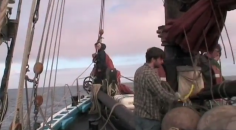
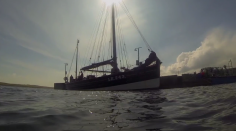

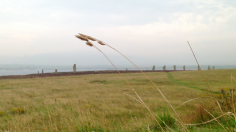
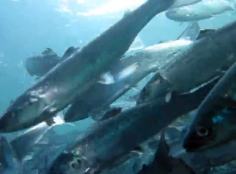
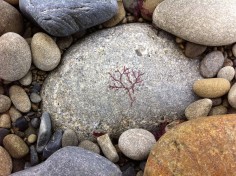
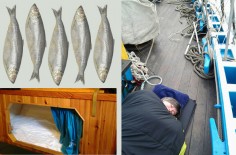


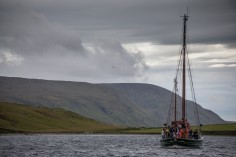







Ruth,
Great to share through such good words, and photograph. Marks left in sand that last for over a thousand years.
DB